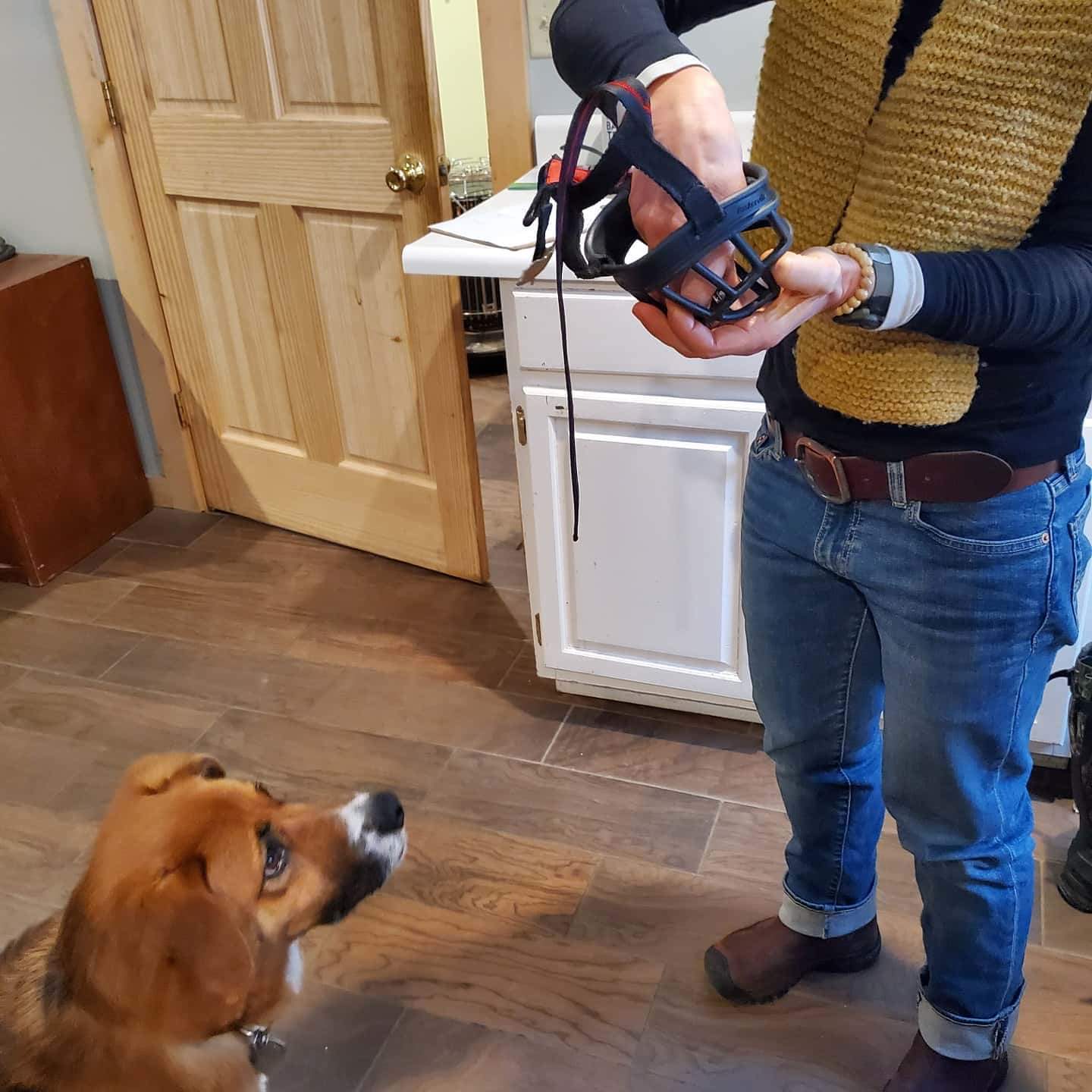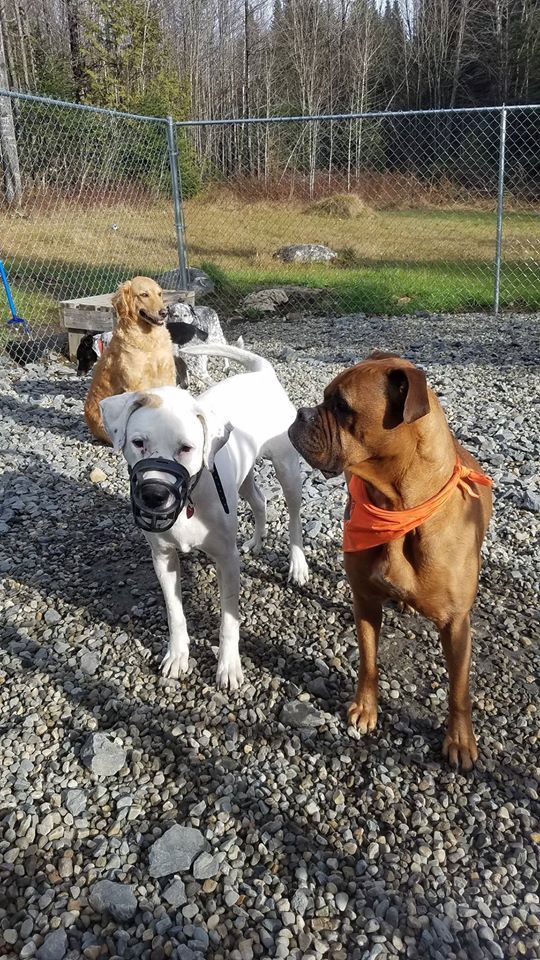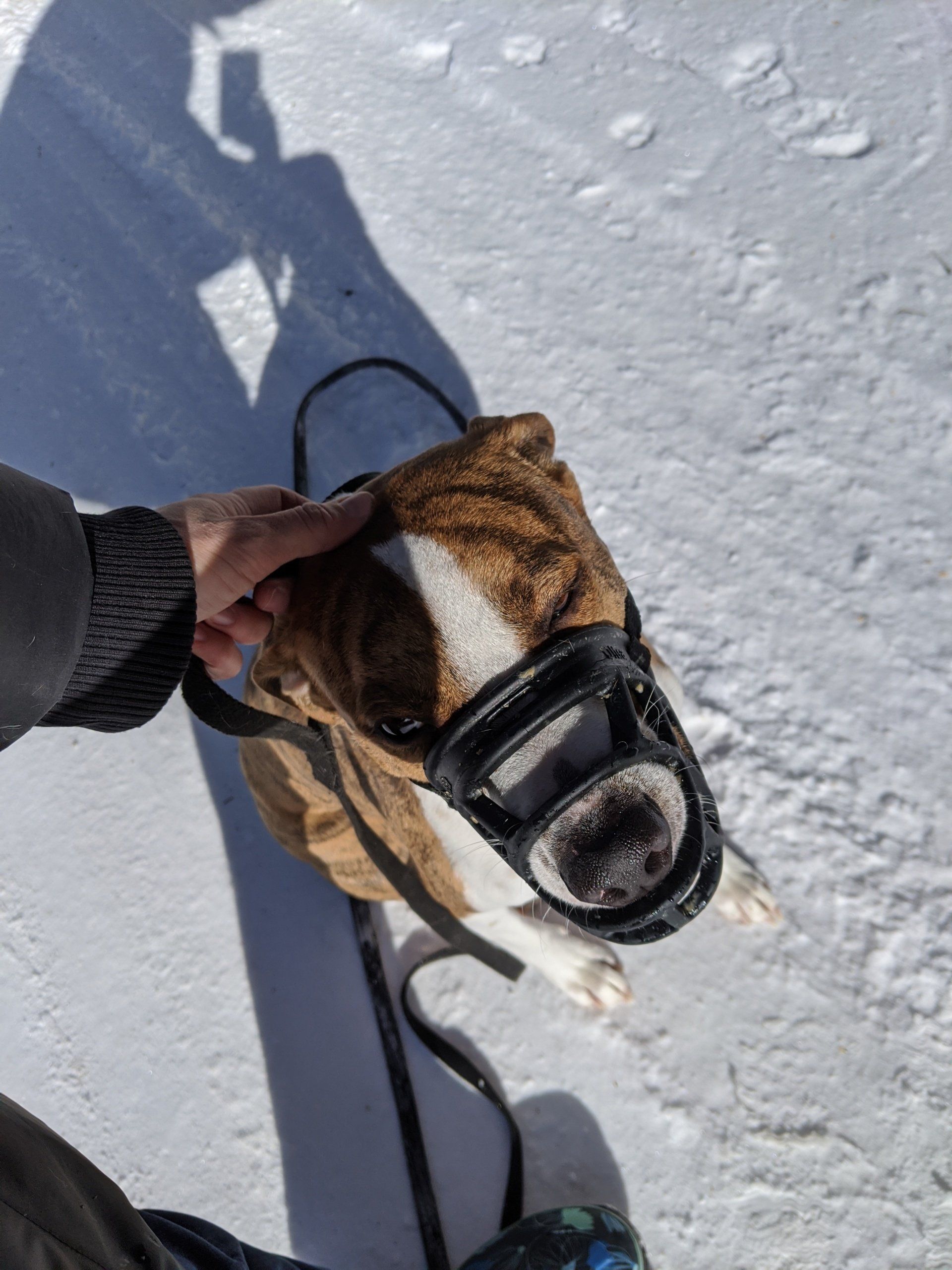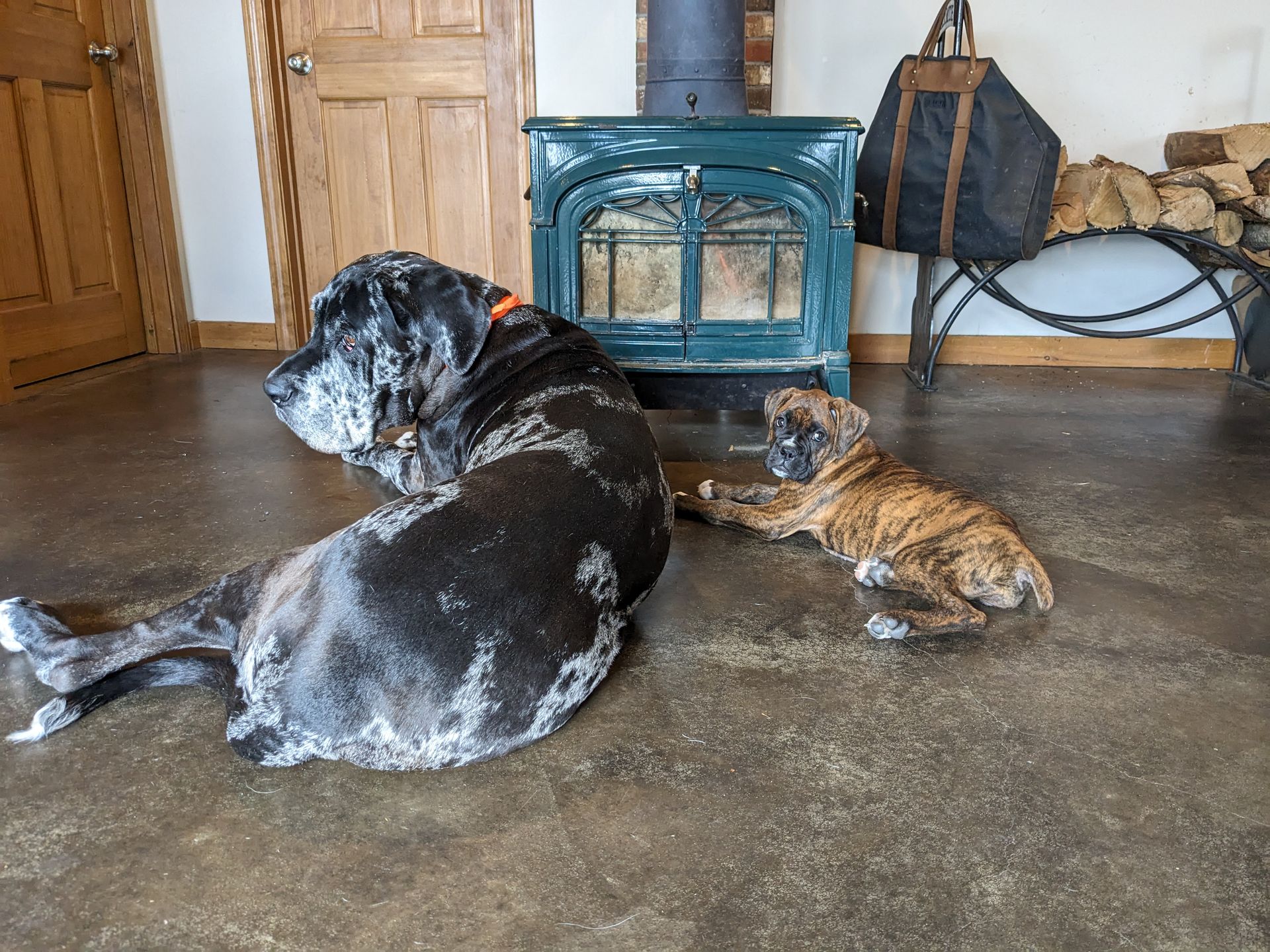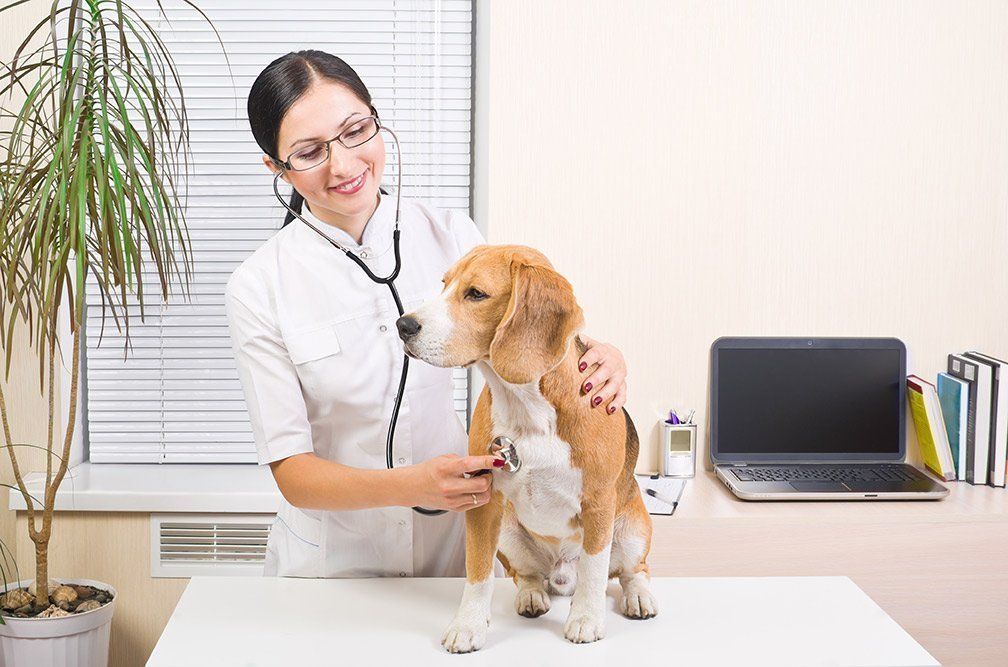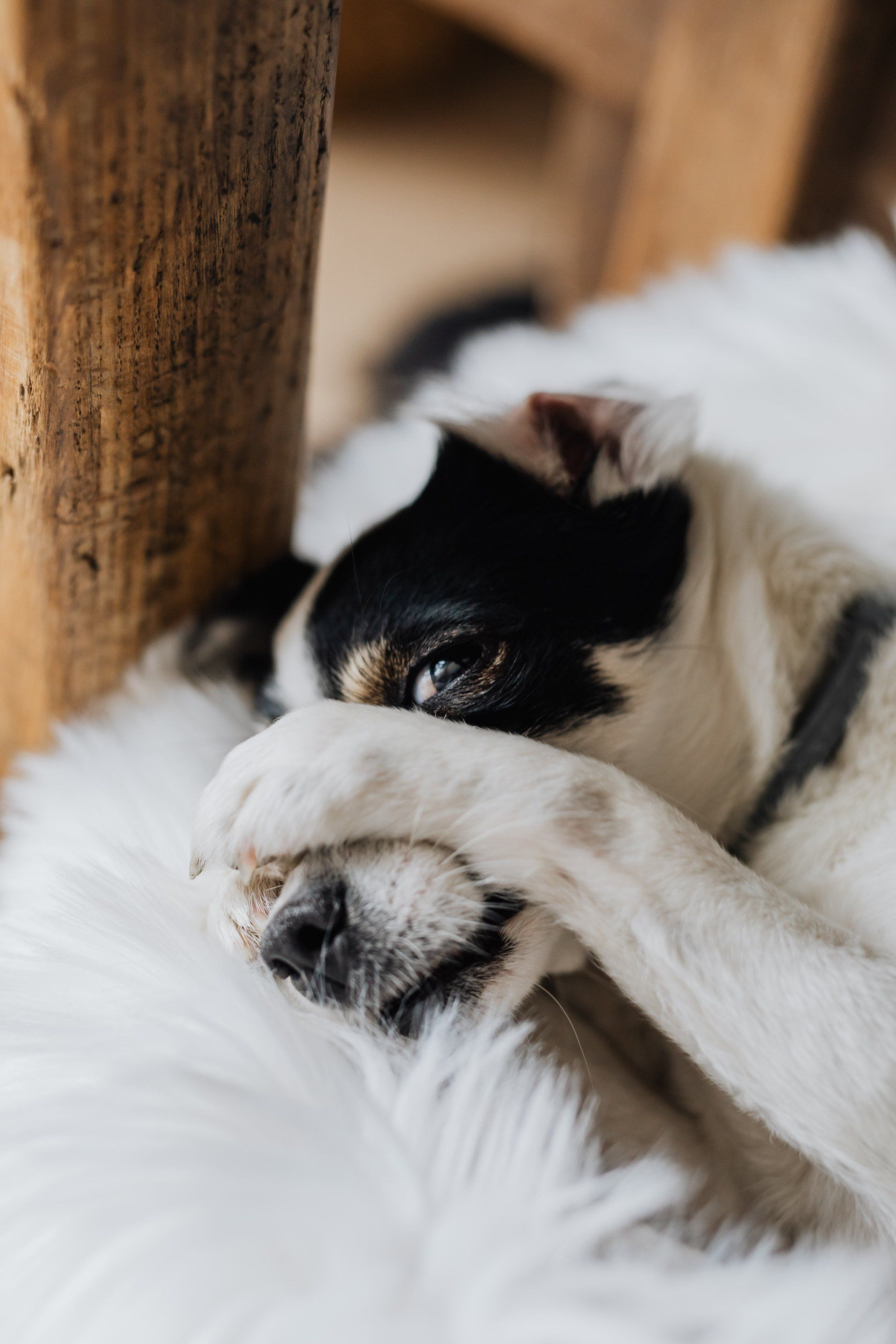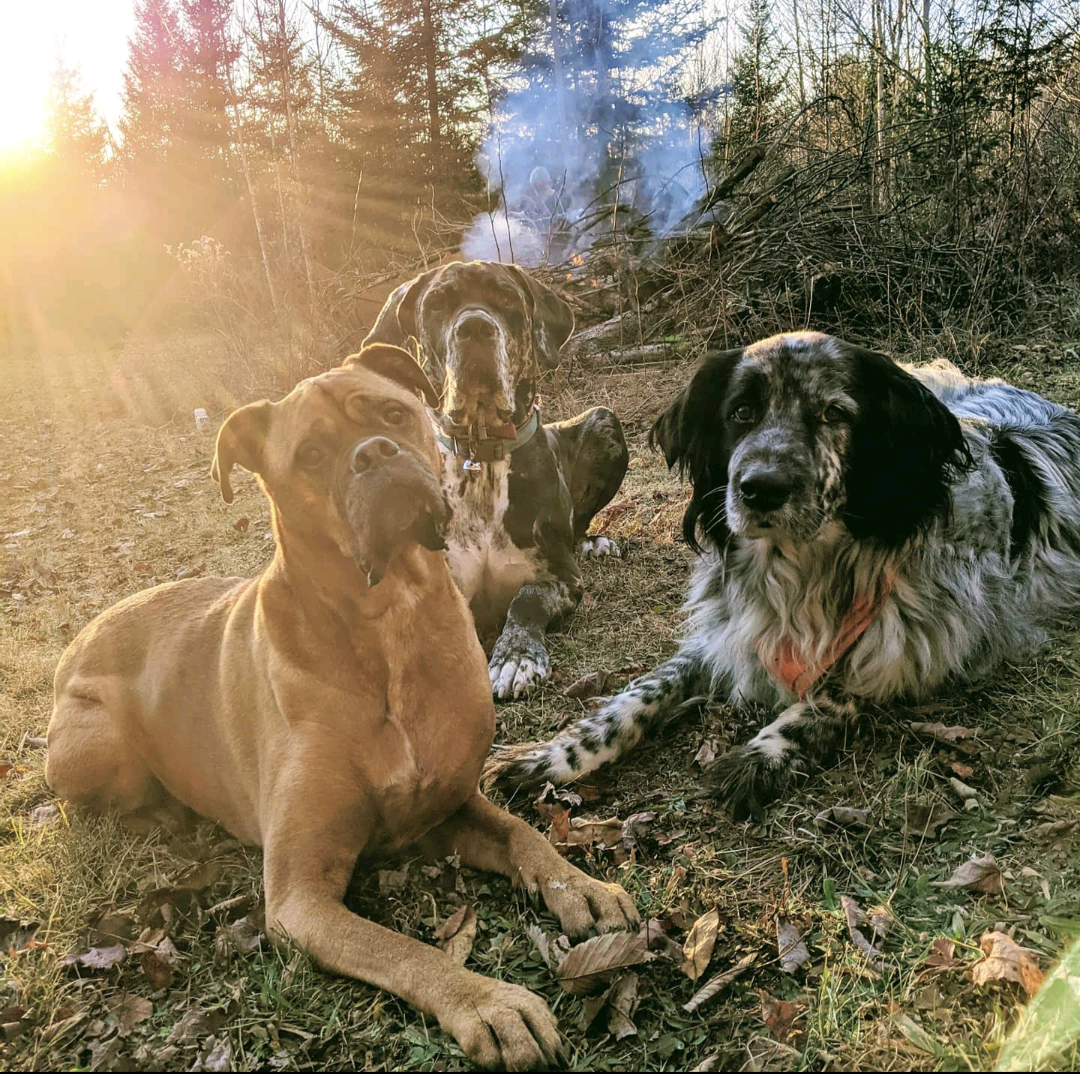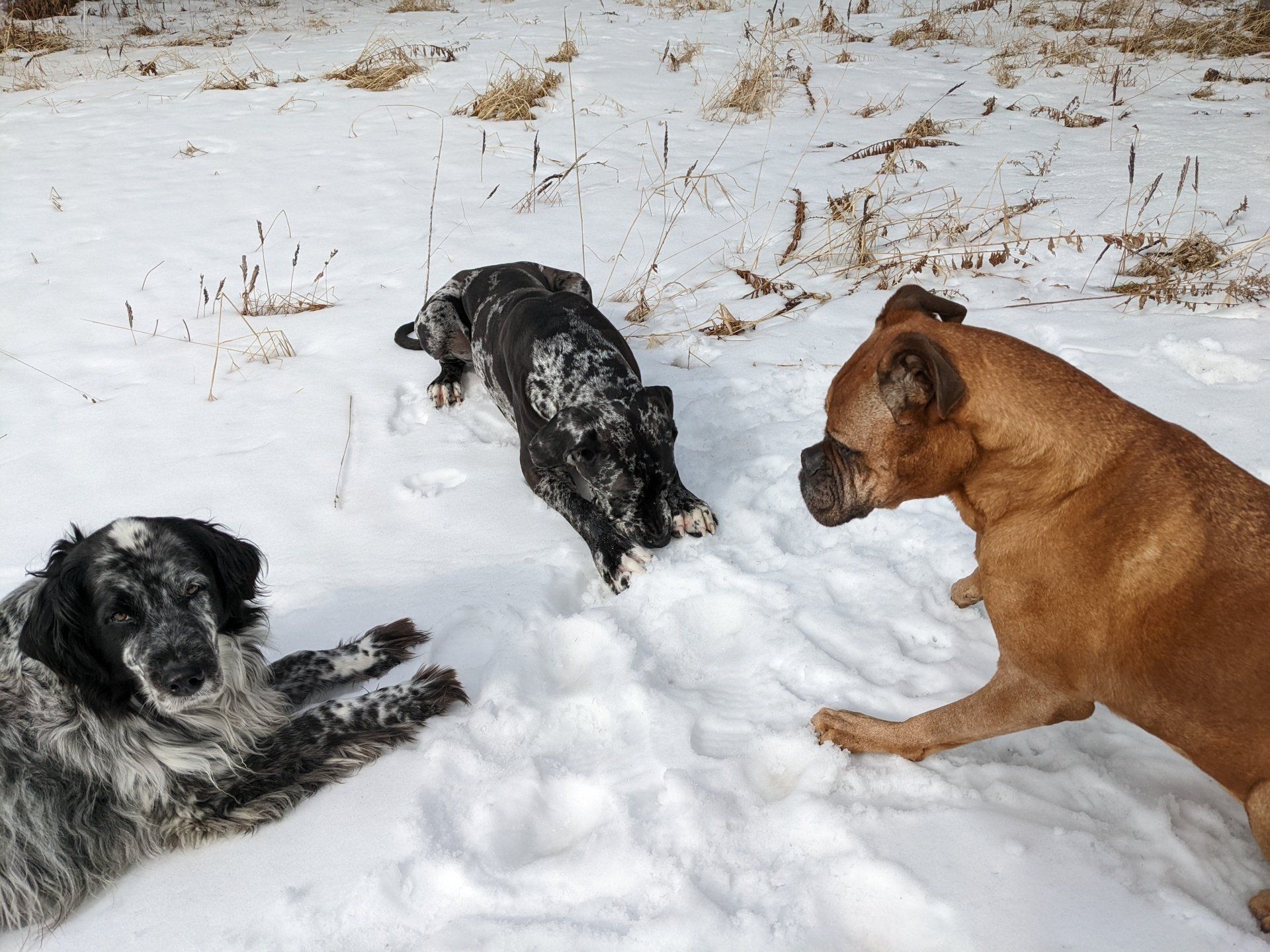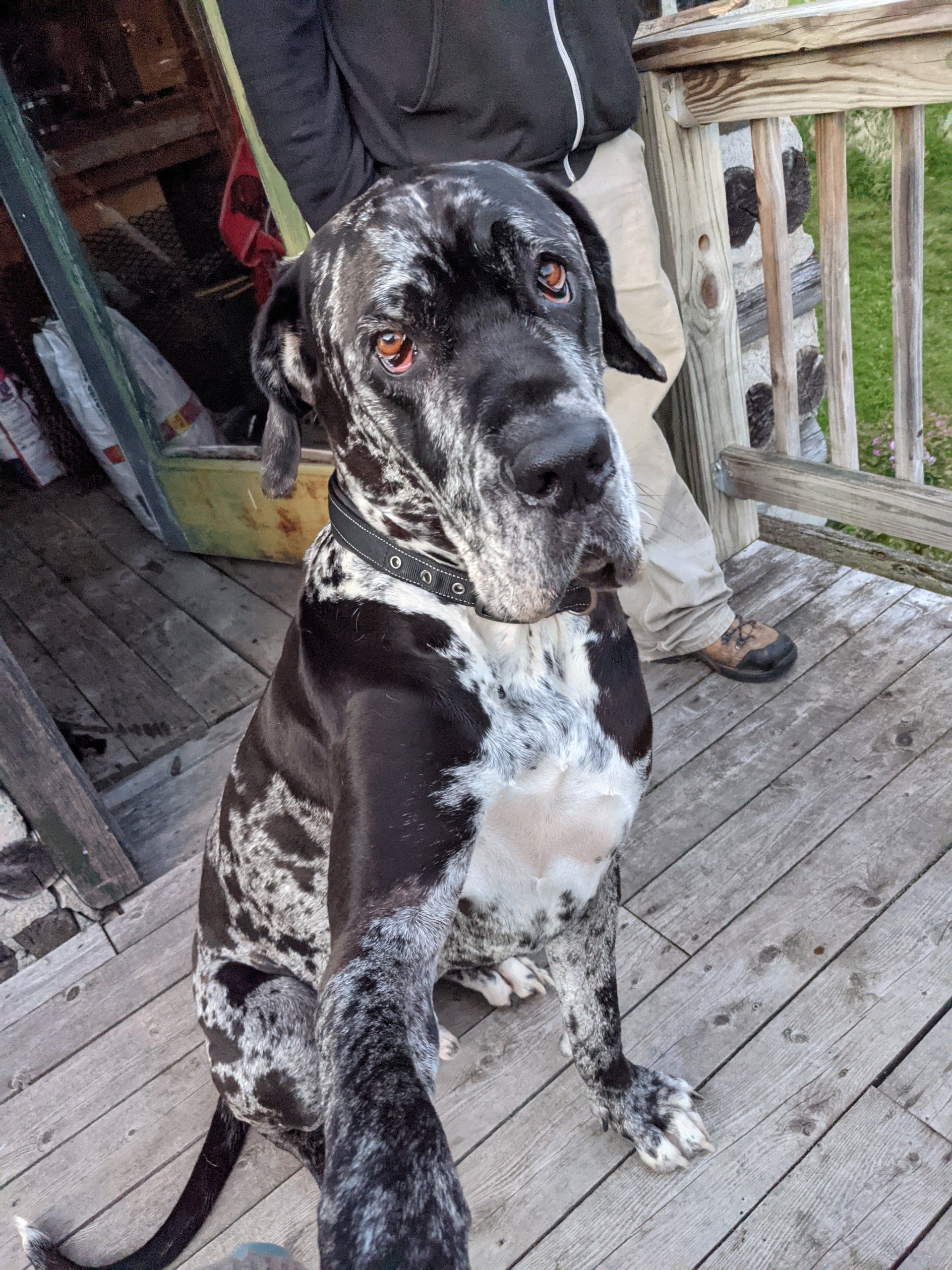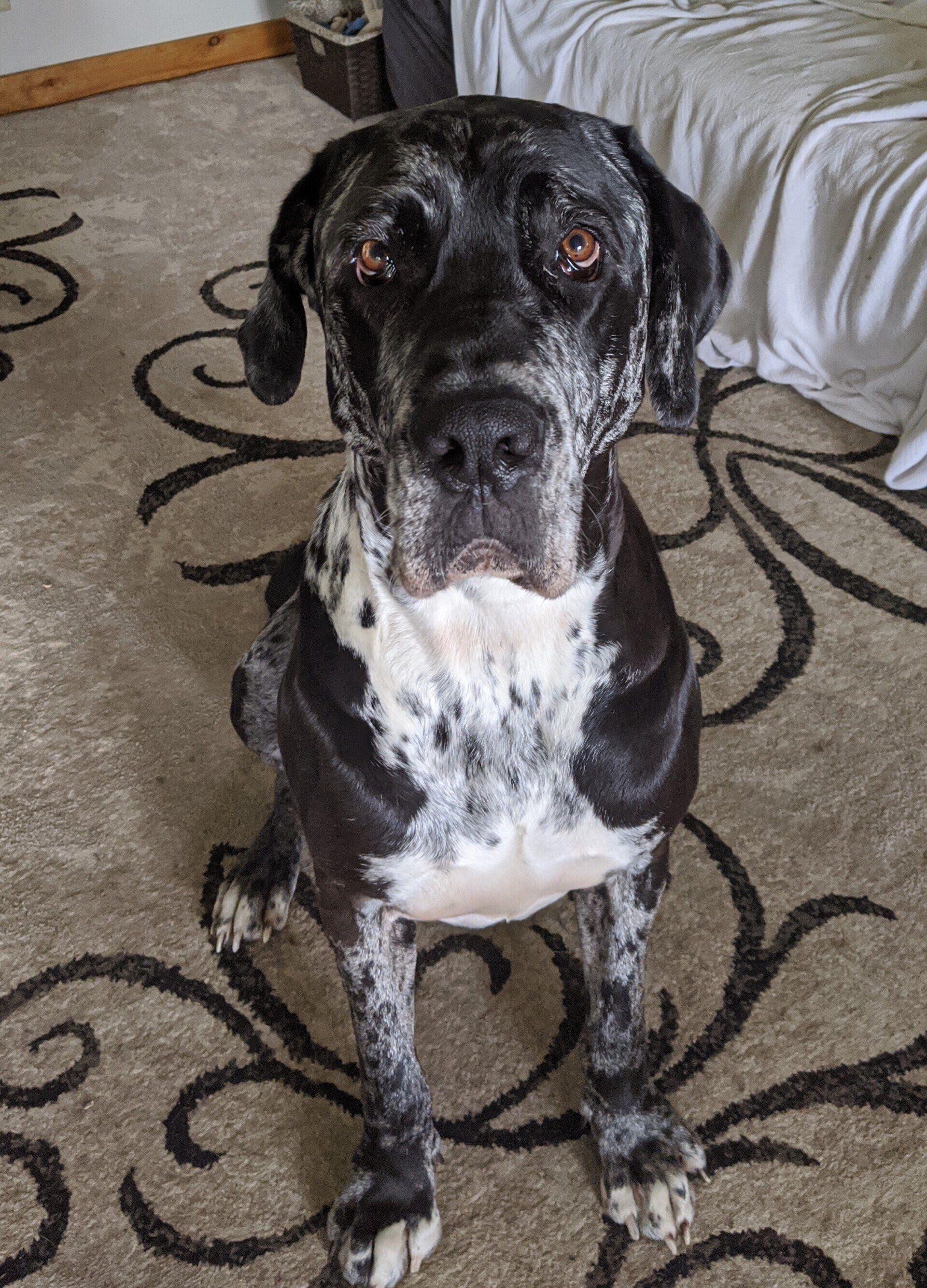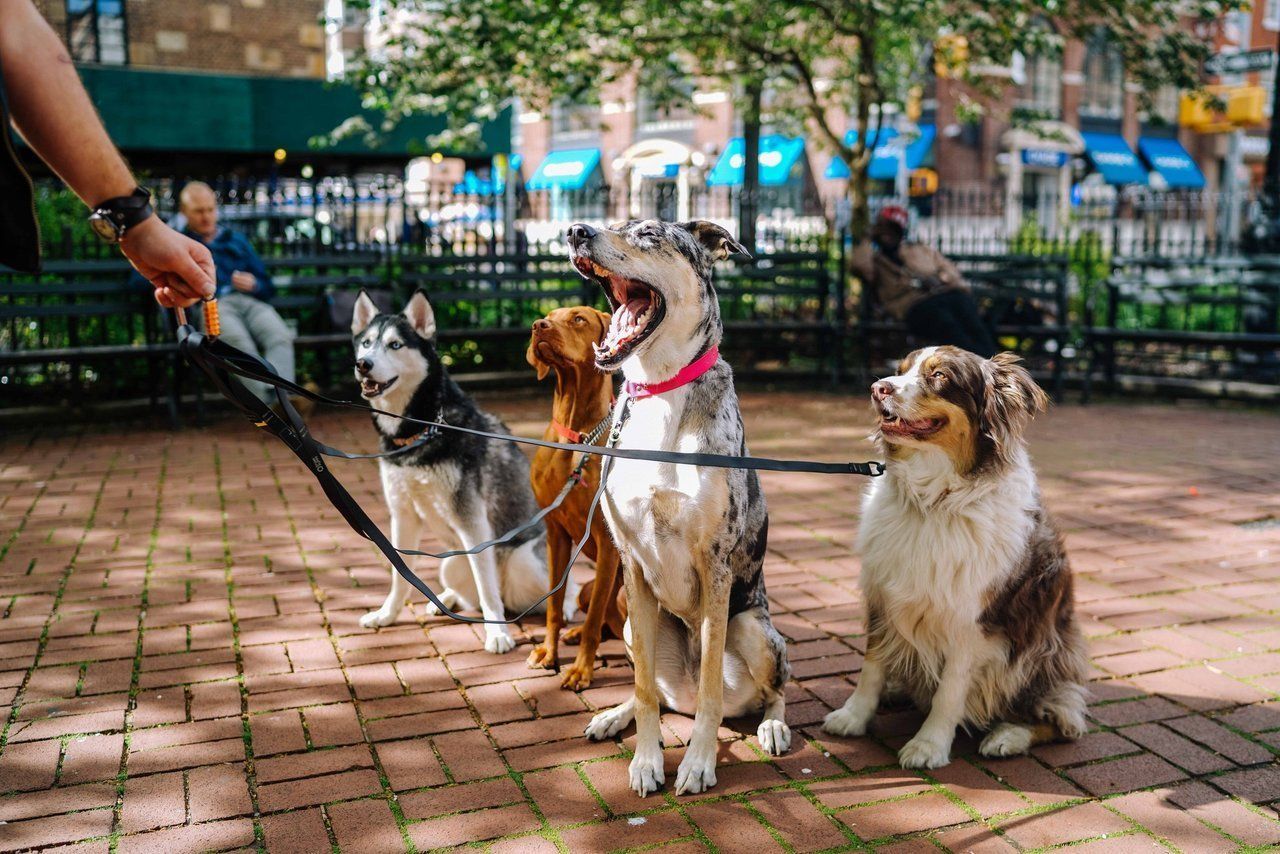"Why is That Dog Wearing a Muzzle? Is He Aggressive?"
Gillian Scarpino
Let's bust some myths about the wonderful tool that is the muzzle!
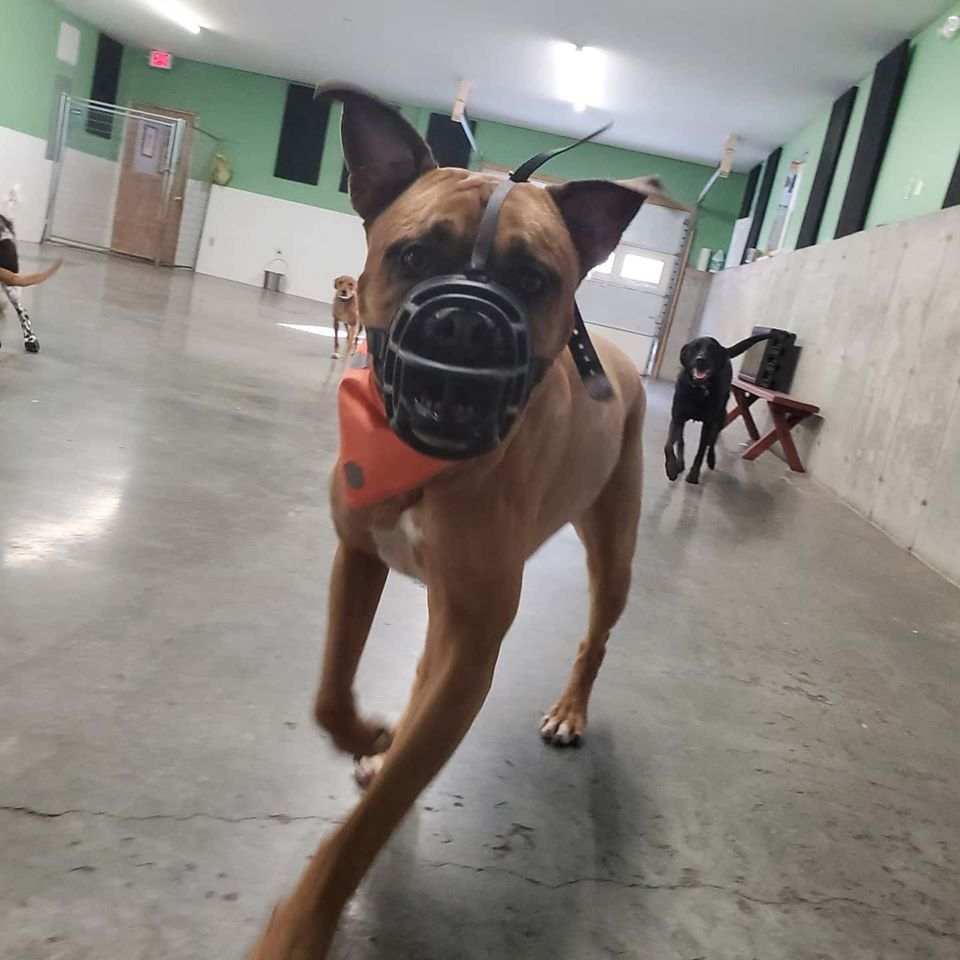
If you follow our Facebook or Instagram feeds at all, you're likely to see pictures of dogs wearing muzzles pretty often. We sometimes get comments wondering why certain dogs have to wear muzzles, wondering if those dogs are dangerous, or wondering when those dogs will be able to take those muzzles off and never have to wear them again. And we understand the confusion, before we were several years deep into working with packs of dogs day in and day out, we didn't know the truths about this tool either. So let's bust some myths!
Myth:
He must be dangerous if he's wearing that
Truth:
He just became the safest dog in the room because he can't put his mouth on another dog (or human)
Myth:
He must be aggressive if he's wearing that
Truth:
There are lots of reasons why an owner might have their dog muzzled (we will get to those shortly)
Myth:
He is probably bad with other dogs
Truth:
On the contrary, he may be great a huge majority of the time, but that small chance that a scuffle happens he could be serious
Myth:
They can't eat or drink when they are wearing them
Truth:
They absolutely can! We recommend the Baskerville Muzzle: dogs can pant, eat, and drink while wearing them!
Myth:
He must not be allowed near other dogs
Truth:
It is BECAUSE of this tool that dogs who may not have the best social skills can finally have a chance to safely interact, learn from other dogs, and change their behavior.
In relating this to human behavior, someone who might be a little insecure may hold everything in until they overreact, right? (Forgive my psychology background here!) They probably didn't learn the lower levels of communicating how they really feel in constructive ways, maybe they didn't have anyone to model that behavior for them, or were never given any chances to talk about their feelings so they learned the cycle of repress, repress, repress, blow up, repeat.
It is pretty similar to dogs here! When dogs don't learn social skills (especially during critical periods of their lives), they have nothing to pull from. All they know is how to blow up. Once they've blown up, and it has gotten them the response they wanted, they are going to do it again. So now that they have a practiced behavior, we need to expect that they have the capacity to do it again, so we need to have a backup plan while we take on behavior modification. So it's not "this dog is aggressive", it's "this dog has shown aggressive behavior" and we need to help him learn to communicate in a new way, and muzzles can often be a huge part of that training plan!
Let's talk about the multitude of reasons a dog might be wearing a muzzle.
1. They need help learning new social skills (in other words, they have been in a dog fight in the past)
2. They have a bite history (either with humans or dogs)
3. They may be dealing with a painful medical condition that could make them more likely to react
4. The owner doesn't want other people or dogs coming near them
5. The dog wears a muzzle to the veterinarian's office as an extra measure to keep everyone safe
6. The dog wears a muzzle to the groomer's as an extra measure to keep everyone safe
7. An owner is introducing another animal to the house and wants to keep everyone safe
8. It is even required in some cities that certain dogs wear muzzles!
9. So many more reasons...
As you can see, just because something looks a certain way, doesn't mean it is that way at all. A shift in perception will help you see that muzzles have actually been game changers for countless owners, given dogs a new quality of life that includes playing with other dogs and letting their guards down, and kept everyone safe even if things didn't go as planned. After all, we are only human, and dogs are really predators who have been domesticated! Having a backup plan is always a good idea when there is room for error!
For more information about muzzles and teaching dogs how to socialize, check out our blog post about Duke: https://www.otbtvt.com/social-skills-save-lives
If you are considering teaching your dog how to wear a muzzle (known as the "Muzzle Conditioning" process), check out our newest course in our online membership at www.otbt.training, it just dropped today! We teach you step by step how to introduce the muzzle in a positive way so your dog always knows something great is about to happen whenever it comes out! We have several other courses on the inside, from Basic Obedience to Loose Leash Walking to teaching your dog to come back to you.
Happy Training!


